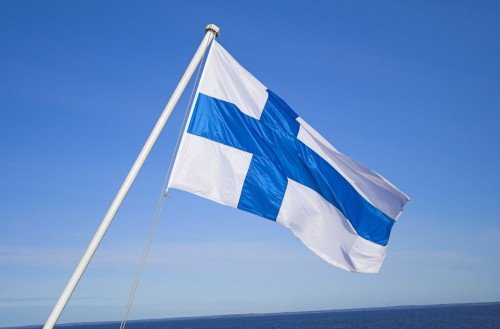
Introduction: Language is a remarkable tool that reflects the unique cultural identity and history of a nation. One language that truly captivates linguists and language enthusiasts is Finnish. Spoken by approximately 5 million people worldwide, predominantly in Finland, Finnish is an intriguing language with its distinctive features, complex grammar, and melodic sound. In this blog post, we will delve into the beauty and richness of the Finnish language, unraveling its fascinating characteristics and shedding light on its significance in Finnish society.
Phonetics and Phonology:
Finnish boasts a phonetic system that is largely consistent, making it relatively easy for speakers to pronounce words once they grasp the rules. Vowels play a significant role, with a total of eight vowel phonemes, including front, back, and rounded vowels. The melody and rhythm of Finnish, influenced by stress patterns and vowel length, give the language its unique musical quality.
Phonetics and phonology are two interconnected branches of linguistics that study the sounds and sound patterns in language. They play a crucial role in understanding the pronunciation and phonetic features of a particular language, including Finnish. Let's explore the phonetics and phonology of the Finnish language in more detail:
-
Vowels: Finnish has a total of eight vowel phonemes: /i/, /e/, /y/, /ä/, /a/, /o/, /u/, and /ö/. These vowels can be either short or long, and vowel length is significant in distinguishing word meanings. Finnish is known for its vowel harmony, where vowels within a word need to match in terms of frontness or backness. This feature adds to the melodic and harmonious nature of the language.
-
Consonants: Finnish has a relatively straightforward consonant system with 18 consonant phonemes. Some notable consonant sounds include /p/, /t/, /k/, /s/, and /h/. Consonant gemination, or the doubling of consonants, is common in Finnish and can affect word meaning and pronunciation.
-
Stress and Rhythm: Finnish has a stress-timed rhythm, meaning that stressed syllables occur at relatively regular intervals. Stress is typically placed on the first syllable of a word, and the following syllables are unstressed. This stress pattern contributes to the musical quality of the language.
-
Phonotactics: Finnish has specific rules regarding the combination of consonants and vowels within a word. For example, consonant clusters are generally allowed at the beginning of a word, while at the end of a word, they are limited to certain combinations. Additionally, Finnish allows for long consonant clusters within a word, which can pose challenges for non-native speakers.
-
Orthographic Representation: The Finnish orthography is generally phonemic, meaning that the spelling system corresponds closely to the pronunciation. However, there are some exceptions and irregularities, particularly related to the representation of vowel length and vowel harmony. The Finnish alphabet consists of 29 letters, including all the basic Latin letters plus some additional characters specific to Finnish phonology, such as ä and ö.
Understanding the phonetics and phonology of the Finnish language provides a foundation for accurate pronunciation and comprehension. It allows learners to appreciate the musicality of the language and navigate its unique sound patterns. Exploring these aspects of Finnish linguistics enhances the overall language learning experience and deepens the connection with Finnish culture and society.
Vocabulary and Influences:
The Finnish language has a rich vocabulary derived from its Finno-Ugric roots. While Finnish shares some similarities with other Finno-Ugric languages, it stands apart due to its distinctive lexicon. Finnish has absorbed loanwords from various sources, including Swedish, Russian, German, and English. However, it has managed to maintain its own identity by adapting these loanwords to conform to Finnish phonetics and morphology.
Grammar and Syntax:
One of the most intriguing aspects of Finnish is its complex grammar and flexible syntax. Finnish is an agglutinative language, which means that words are formed by adding affixes to the base word. This allows for extensive word derivation and the creation of long and descriptive words. Nouns, verbs, adjectives, and pronouns all undergo various inflections to indicate case, number, and tense. The Finnish language has a total of 15 cases, each serving specific grammatical functions.
Cultural Significance:
Language is deeply intertwined with culture, and Finnish is no exception. The Finnish language plays a pivotal role in shaping Finnish national identity, acting as a symbol of unity and cultural heritage. The Kalevala, an epic Finnish poem compiled by Elias Lönnrot, is regarded as a cornerstone of Finnish literature and has contributed to the preservation and promotion of the Finnish language. Moreover, Finnish is the official language of Finland and is crucial for political, educational, and administrative purposes.
Language Revitalization Efforts:
Despite its significance, the Finnish language faces challenges in the modern world, such as the influence of global languages and changing communication patterns. However, Finland has implemented various language revitalization initiatives to promote the use of Finnish, both domestically and internationally. These efforts include promoting Finnish language education, supporting Finnish-language media, and fostering cultural events that celebrate the language and its heritage.
Conclusion:
The Finnish language is a linguistic gem that offers a fascinating blend of phonetics, vocabulary, grammar, and cultural significance. Its melodic sound, intricate grammar, and unique vocabulary make it a captivating language to learn and explore. By understanding the beauty and richness of the Finnish language, we gain insight into the diverse cultural tapestry that shapes Finland's identity. Let us cherish and celebrate the Finnish language, ensuring its preservation for generations to come.
Recent Posts

Agenzia di Traduzione a Roma: ...

Die Essentielle Rolle von Übe...

Die Essentielle Rolle von Übe...

Die Essentielle Rolle von Übe...

La Traduction Assermentée: Un...

Leeds: A Hub of Cultural Diver...
Share it.
© Copyright 2022 LLC


